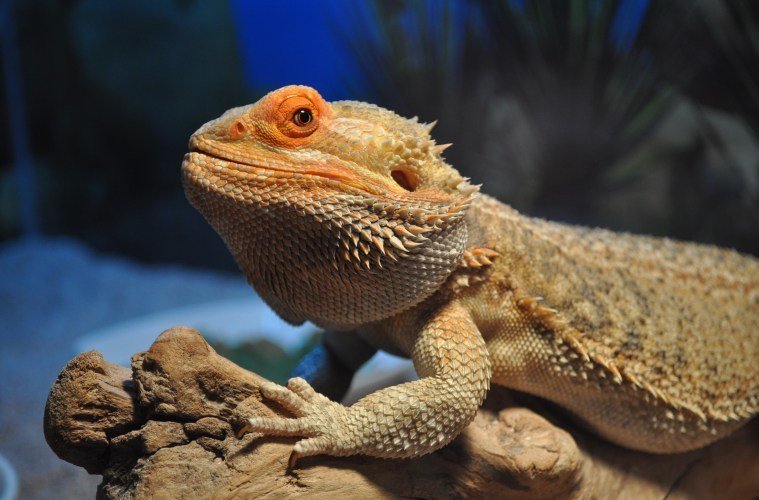Lowering humidity in a reptile tank can be a challenge. High humidity levels can harm your reptile’s health.
Understanding how to manage humidity is crucial for your pet’s well-being. Reptiles need specific environments to thrive. Too much moisture can lead to respiratory issues and mold growth. By controlling the humidity, you create a safer habitat. This guide will help you learn simple and effective ways to lower humidity in your reptile tank.
You’ll find practical tips to make your pet’s home comfortable and healthy. Dive in to ensure your reptile lives in the best conditions possible.

Credit: www.youtube.com
Importance Of Proper Humidity
The importance of proper humidity in a reptile tank cannot be overstated. Maintaining the right humidity level is crucial for your reptile’s health and well-being. Each species has specific humidity needs that mimic their natural habitat. Incorrect humidity can lead to health issues and stress for your pet.
Impact On Reptile Health
Proper humidity supports your reptile’s skin shedding process. It helps prevent respiratory infections. Incorrect humidity levels can cause dehydration. Reptiles may also develop skin problems. Ensuring the correct humidity level is vital for their overall health.
Signs Of High Humidity
High humidity can cause mold growth in the tank. You might notice a musty smell. Reptiles can have trouble shedding their skin. They may show signs of respiratory issues. Watch for condensation on the tank walls. These are clear indicators of high humidity.
Choosing The Right Substrate
Choosing the right substrate for your reptile tank is crucial. It helps control the humidity levels. The wrong substrate can trap moisture. This can cause high humidity and health issues for your reptile. Let’s explore the best substrate types and how to avoid moisture retention.
Best Substrate Types
Several substrates work well to lower humidity. Sand is a popular choice. It drains well and doesn’t hold moisture. Reptile carpet is another good option. It’s easy to clean and doesn’t retain water. Paper towels can also be used. They are cheap, easy to replace, and do not hold moisture.
Tile is another effective substrate. It stays dry and is easy to clean. Coconut fiber is not recommended. It holds too much moisture. Aspen bedding is a better choice. It is safe and helps keep the tank dry.
Avoiding Moisture Retention
Some substrates trap moisture. Avoid substrates like soil or moss. These can make the tank too humid. Wood chips are also not ideal. They can hold water and raise humidity levels. Mulch should be avoided too. It can stay wet and increase humidity.
Keep an eye on the substrate’s condition. Replace it regularly to prevent moisture buildup. Use a dehumidifier if needed. This can help manage the tank’s humidity. A fan can also help with air circulation. It reduces moisture and keeps the tank dry.
Ventilation Techniques
Proper ventilation is key to maintaining the right humidity levels in your reptile tank. Without it, excess moisture can lead to health issues for your reptile. Here, we will explore both installing ventilation systems and using natural ventilation methods.
Installing Ventilation Systems
Installing a ventilation system can greatly improve air circulation. This helps keep humidity at optimal levels. Consider using the following tools:
- Exhaust Fans: These fans pull moist air out of the tank.
- Intake Vents: These allow fresh air to enter the tank.
- Mesh Lids: These lids offer better airflow compared to solid lids.
Use these tools together for the best results. For example, place an exhaust fan at the top and an intake vent at the bottom. This setup encourages airflow from bottom to top.
Natural Ventilation Methods
Natural ventilation methods are cost-effective and simple. Here are some ways to naturally ventilate your reptile tank:
- Open the Tank Lid: Leave the lid slightly open for better air circulation.
- Use Screen Covers: Replace solid covers with screen covers for improved airflow.
- Position Near a Window: Place the tank near a window to allow fresh air in.
Ensure the tank is secure to prevent escapes if you use open lids or screen covers. Use these natural methods along with a fan for the best results.
| Method | Tool/Technique |
|---|---|
| Mechanical Ventilation | Exhaust Fans, Intake Vents, Mesh Lids |
| Natural Ventilation | Open Lids, Screen Covers, Window Positioning |
Combining these ventilation techniques ensures your reptile tank maintains the right humidity levels. This keeps your reptile healthy and comfortable.

Credit: reptile.guide
Using Dehumidifiers
Maintaining the right humidity level in a reptile tank is crucial. Too much humidity can lead to health issues for your pets. One effective way to control humidity is by using dehumidifiers. These devices help reduce moisture in the air, creating a healthier environment for your reptiles.
Types Of Dehumidifiers
There are various types of dehumidifiers suitable for reptile tanks. The most common are electric dehumidifiers. They are efficient and easy to use. Another option is desiccant dehumidifiers, which use materials that absorb moisture. Each type has its pros and cons, so choose based on your needs.
Placement And Usage Tips
Proper placement of the dehumidifier is essential for effectiveness. Place it near the tank but not inside. Ensure the dehumidifier has enough space around it for airflow. Regularly check and empty the water reservoir to maintain its efficiency.
Consider the size of your reptile tank when selecting a dehumidifier. A larger tank may require a more powerful device. Monitor humidity levels with a hygrometer to ensure they remain within the ideal range for your reptiles.
Managing Water Sources
Managing water sources is crucial in maintaining the right humidity levels in your reptile tank. Reptiles require specific humidity levels to thrive, and excess moisture can lead to health issues. By adjusting water bowls and controlling water features, you can create a comfortable environment for your pet.
Adjusting Water Bowls
Water bowls can contribute to high humidity levels in the tank. Place the water bowls in cooler areas of the tank. This reduces the evaporation rate. Use smaller water bowls to minimize the surface area of water. Less surface area means less evaporation. Keep the water level low in the bowls. This also helps in reducing humidity.
Controlling Water Features
Water features like fountains or waterfalls add moisture to the tank. Consider turning off these features if humidity is too high. Alternatively, use a timer to limit their operation. Choose water features with adjustable flow rates. Lower flow rates result in less evaporation. Ensure proper ventilation around water features to prevent moisture buildup.
Temperature Control
Temperature control plays a crucial role in maintaining proper humidity levels in a reptile tank. Keeping the right temperature ensures your pet’s health and comfort. Let’s explore how to manage temperature effectively.
Optimal Temperature Ranges
Each reptile species has specific temperature needs. Research your pet’s ideal temperature range. Most reptiles thrive between 75°F to 85°F during the day. Night temperatures usually drop to 65°F to 75°F. Maintaining these ranges helps control humidity.
Heating Equipment
Use reliable heating equipment to achieve the right temperature. Heat lamps are popular and effective. They provide a consistent heat source. Under-tank heaters can also help. They warm the substrate, creating a comfortable environment.
Ceramic heat emitters are another option. They produce heat without light, ideal for nocturnal reptiles. Thermostats are essential to prevent overheating. They help regulate the temperature, ensuring a stable environment.
Position heating devices correctly. Place them outside the tank to avoid direct contact. This prevents burns and ensures even heat distribution. Regularly check the temperature with a reliable thermometer. Adjust equipment as needed to maintain optimal conditions.
Monitoring Humidity Levels
Monitoring humidity levels in your reptile tank is crucial for your pet’s health. Too high humidity can cause respiratory issues or mold growth. Too low, and it can lead to dehydration or shedding problems. Regularly checking and adjusting the humidity ensures your reptile’s well-being.
Using Hygrometers
Install a reliable hygrometer in the reptile tank. This device measures humidity levels accurately. Place it in a central location. Avoid placing it near heat sources or water dishes. Check the readings daily. This helps you understand the tank’s humidity trends.
Regular Maintenance
Regular maintenance is key to controlling humidity. Clean the tank often. Remove any waste, uneaten food, and shed skin. These can increase humidity. Ensure proper ventilation. Open the tank’s vents or use a fan. This helps lower humidity levels.
Check the water levels in the tank. Keep them at an appropriate level. Too much water can raise humidity. Adjust the water bowl size if necessary. Monitor the substrate’s moisture. Replace it if it becomes too damp. This prevents excess humidity buildup.

Credit: talis-us.com
Additional Tips And Tricks
Maintaining the right humidity levels in your reptile tank is crucial for your pet’s health. Sometimes, keeping the humidity within the ideal range can be challenging. Here are some additional tips and tricks to help you manage humidity effectively.
Seasonal Adjustments
Changes in weather can affect humidity levels in your reptile tank. During summer, higher temperatures can increase humidity. Use a dehumidifier in the room where the tank is located. This helps to keep the humidity in check.
In winter, heating systems can dry out the air, reducing tank humidity. Place a water dish inside the tank. This can increase the humidity level. Ensure the dish is not too large to avoid excessive humidity.
Emergency Measures
Sometimes, you might need to adjust humidity levels quickly. Use paper towels to absorb excess moisture. Place them in the tank and replace them when they become damp.
If humidity drops suddenly, mist the tank lightly. Use a spray bottle with water. Avoid over-misting to prevent creating a wet environment.
Monitor the tank’s humidity levels regularly. Use a hygrometer for accurate readings. This ensures you can take action promptly if levels are not ideal.
Frequently Asked Questions
How Can I Reduce Humidity In A Reptile Tank?
You can reduce humidity by increasing ventilation, using a dehumidifier, or placing a moisture-absorbing material. Also, reduce water sources.
What Causes High Humidity In Reptile Tanks?
High humidity is often caused by excess water sources, poor ventilation, and high ambient humidity. Regular monitoring helps control it.
Is High Humidity Bad For Reptiles?
Yes, high humidity can cause respiratory issues and skin infections in reptiles. Proper humidity levels are crucial for their health.
Can A Dehumidifier Help With Reptile Tank Humidity?
Yes, using a dehumidifier can effectively reduce excess humidity in a reptile tank. It’s a useful tool for maintaining balance.
Conclusion
Lowering humidity in a reptile tank is crucial for your pet’s health. Use the tips shared to maintain a comfortable environment. Regularly check and adjust levels. This ensures your reptile remains healthy and happy. Remember, small changes can make a big difference.
Keep an eye on the tank’s conditions and adjust as needed. Your reptile will thank you. Happy pet keeping!





